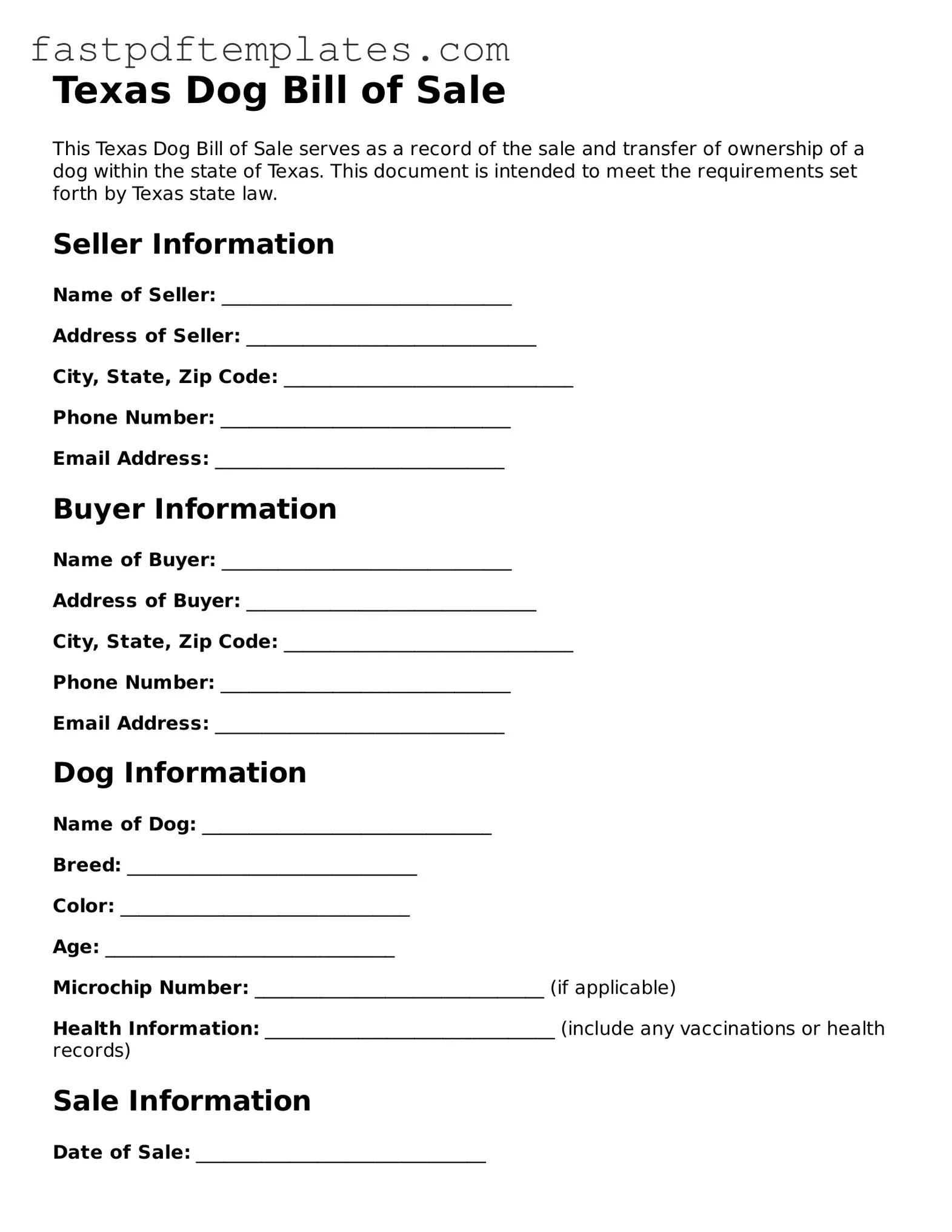Texas Dog Bill of Sale
This Texas Dog Bill of Sale serves as a record of the sale and transfer of ownership of a dog within the state of Texas. This document is intended to meet the requirements set forth by Texas state law.
Seller Information
Name of Seller: _______________________________
Address of Seller: _______________________________
City, State, Zip Code: _______________________________
Phone Number: _______________________________
Email Address: _______________________________
Buyer Information
Name of Buyer: _______________________________
Address of Buyer: _______________________________
City, State, Zip Code: _______________________________
Phone Number: _______________________________
Email Address: _______________________________
Dog Information
Name of Dog: _______________________________
Breed: _______________________________
Color: _______________________________
Age: _______________________________
Microchip Number: _______________________________ (if applicable)
Health Information: _______________________________ (include any vaccinations or health records)
Sale Information
Date of Sale: _______________________________
Sale Price: $_______________________________
Terms and Conditions
By signing below, both parties agree to the following:
- The Seller warrants that they are the rightful owner of the dog and have the authority to sell it.
- The Buyer accepts the dog "as is" and acknowledges the condition of the pet.
- The Seller disclaims any further obligations following the sale beyond the stated terms.
- This agreement is binding and serves as proof of ownership transfer.
Signatures
By signing, both parties acknowledge that they have read and understood the above information.
Seller's Signature: _______________________________ Date: _______________________________
Buyer's Signature: _______________________________ Date: _______________________________
This document can be kept for your records and may be useful for future reference, such as registration or health care. Always ensure both parties have copies of this agreement.
